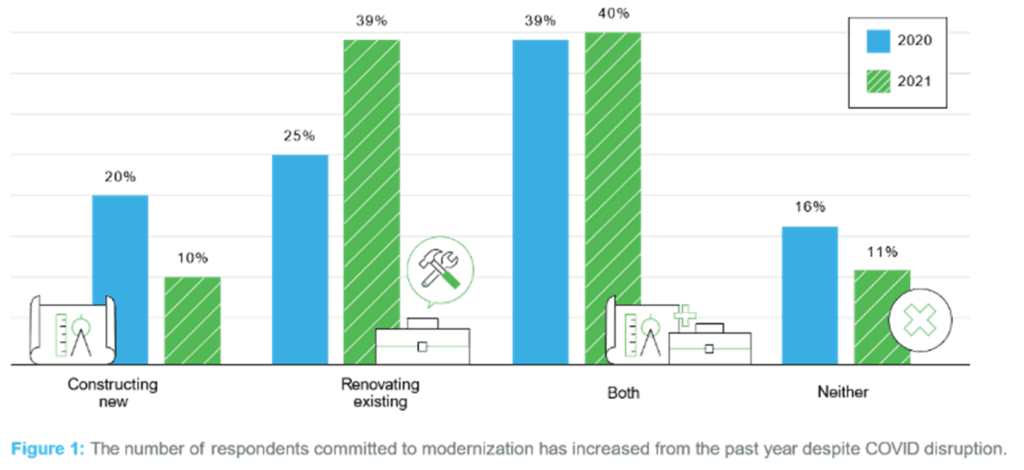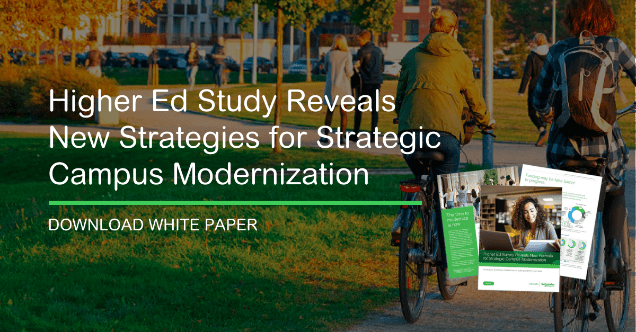In the second half of the 2019-2020 academic year, higher education institutions had to stand up a whole new way of serving their students and faculty in the wake of COVID-19. One year later, colleges are still navigating the ripple effects of COVID disruption and for some, what may have seemed temporary is becoming part of their new normal. At the same time, there is more urgency to solve for pre-pandemic challenges they were already dealing with–shrinking enrollments, declining state and federal funding, and deferred maintenance.
But, true to their resilient nature, the country’s campus leaders are more upbeat as they emerge from a year of disruption than they were before the pandemic. Respondents to a recent Inside Higher Ed survey of college presidents overwhelmingly said their institutions will turn the current disruptive period into an opportunity to address long-standing campus priorities.

This is consistent with our own survey data which revealed an increased commitment to campus modernization from the previous year including 56% of respondents citing plans to maintain or increase the dollar amount of their investments from pre-pandemic levels.
Critical bottlenecks to growth remain
While our study revealed an appetite for campus innovation and growth, it also underscored deferred maintenance backlogs as a critical bottleneck to progress. Among respondents to our survey, on average, more than half of planned investments are going towards maintenance backlogs, leaving limited budget and operational resources to implement strategic projects that support areas of growth such as improving electrical resiliency to meet standards for research.
Funding was not the only hurdle that carried over from pre-pandemic times. Our study also finds a widening operational gap creating uncertainty around how new systems will be managed and maintained over time (figure 2). Outdated tools and technologies saw the biggest increase, perhaps attributed to gaps revealed during shutdowns, with 69% of respondents compared to 49% the previous year.
The persistent financial constraints and widening operational gaps point to critical gaps in the traditional approaches to funding, construction, and operations. Now more than ever, institutions require innovative business models that can support the growing capital requirements and operational complexity inherent to building, operating, and maintaining a 21st century higher ed campus.
A new formula for strategic campus modernization
Disruptive times like these present an opportunity to challenge the status quo. Financial and operational administrators are called upon to lead in this critical moment of pivot to solve for the urgency and complexity in achieving campus modernization goals in a post-pandemic landscape.
Here are key questions for recalibrating your master plan:
- How are you gaining a comprehensive view to track and manage infrastructure and determine capital asset requirements?
- What information is available to help you assess the financial, operational, and technical components of your master plan?
- How will your investments scale to respond to changes in demand and availability of emerging technologies?
- Is there enough flexibility in your operational structure to continually optimize, manage and maintain your campus infrastructure?
For more insights into the study cited in this blog, download our 2021 Higher Ed Market Research Report

